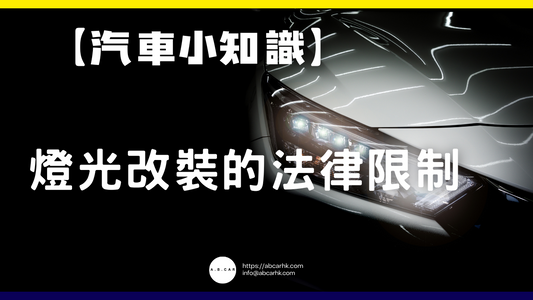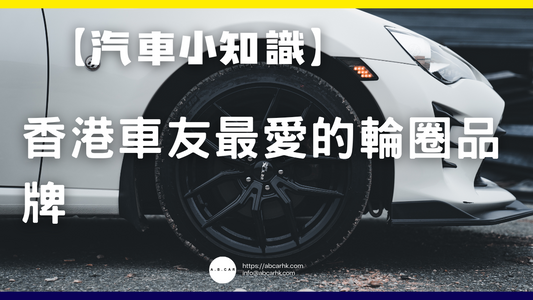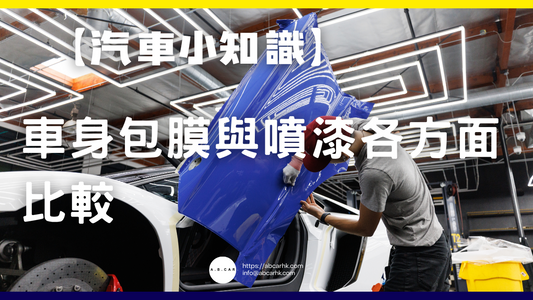【Car Knowledge】Vehicle Inspection Center Inspection Process

🚗 Editor's opening remarks
In Hong Kong, when it comes to vehicle inspections , many people's first reaction is: "Wow, we're going to get caught!" This is especially true for drivers who drive second-hand cars, cars that are more than six years old, or those who have received a yellow paper (inspection notice) for traffic violations .
While vehicle inspections may sound like a big deal, the process is actually quite smooth and quick as long as you have all the necessary documentation and your vehicle is well maintained. However, many people fall victim to inadequate preparation . Whether it's incomplete documentation or minor flaws that the inspector might notice, the process ends with "failure → return to the factory for repairs → re-inspection → rescheduling," often costing weeks and thousands of dollars.
📜 1. What is a vehicle inspection? Why is it required in Hong Kong?
Vehicle inspection means sending your vehicle to an approved inspection centre where government-approved inspectors will test its safety, operation and emission levels to ensure compliance with the Road Traffic Ordinance.
The main conditions of vehicle inspection :
-
Mandatory regular vehicle inspection
- Private cars over 6 years old must undergo a vehicle inspection every year before renewing their license
- Commercial vehicles and large vehicles have shorter inspection cycles (some are once every six months)
-
Requested for vehicle inspection due to violation
- Receive a yellow inspection notice from the police or Transport Department
- First registration of special vehicle types (e.g. modified vehicles, parallel imported vehicles)
- Re-licensing after a long suspension
🏢 2. Distribution and types of vehicle inspection centres in Hong Kong
In Hong Kong, vehicle inspections are generally carried out by Designated Car Testing Centres (DCTCs) approved by the Transport Department, mainly in:
- Kowloon : To Kwa Wan, Kowloon Bay
- Hong Kong Island : Aberdeen
- New Territories : Yuen Long, Shatin, Tai Po, Tuen Mun
🔍Editor ’s note : Not all centres inspect all types of vehicles. For example, some only inspect light vehicles. Commercial vehicles must go to specific venues, so be sure to ask clearly before booking.
📅 3. Essential preparations before vehicle inspection
File
- Vehicle Registration Document
- Valid third-party insurance card
- Vehicle Inspection Notice (if the vehicle is ordered to be inspected)
- ID card/company documents (company car)
- Vehicle registration number (if renewal required)
Vehicles
- Send your car for maintenance a few days in advance and check the following points:
- Headlights, taillights, turn signals, and reverse lights
- Braking system
- Tire tread depth ≥ 1.6mm
- No cracks in the windshield
- License plate clear and intact
- Seat belts functioning properly
- The exhaust system does not produce excessive noise or black smoke
- No obvious oil leakage
💡Editor ’s Tip : Don’t rush to fix any issues at the last minute. It’s best to have your vehicle inspected two weeks beforehand so you have time to address any issues.
🔍 4. Hong Kong vehicle inspection process step by step
The following uses the annual inspection of a private car as an example. The procedures for other types of vehicle inspections are generally similar.
① Registration and document verification
- Submit documents at the counter upon arrival
- The staff will check the owner's information, license plate, and reason for vehicle inspection.
- Issue vehicle inspection form & hand over the vehicle to the inspector
⏱️ Duration: 5–10 minutes 💡 Editor's note: Latecomers usually have to queue again, especially in the morning when there are many people.
② Appearance inspection
- Check the car body for rust and structural damage
- License plate size, font, lighting
- Is the glass damaged? Is the light transmittance qualified?
- Any modification (tail, surround, suspension) will be recorded
⏱️ Duration: 5 minutes ⚠️ Severe modifications or inconsistent structure with the original factory may cause failure
③ Lighting and signal testing
- Turn on the headlights (high and low beam), taillights, and brake lights
- Light measurement and illumination angle (neither too high nor too low)
- Check left and right turn signals and emergency flashers
- Some centers use professional photometers to test
⏱️ Time taken: 5–10 minutes
④ Braking system test
- Drive to the brake tester
- Measure the braking force and left-right balance of foot brake and hand brake
- The pass rate is generally 50–70% (adjusted by vehicle weight)
⏱️ Duration: 5 minutes ⚠️ Large brake deviation will be judged as fail, and the brake pads/discs may need to be replaced.
⑤ Suspension and wheel inspection
- Testing the hanging response using a rocking platform
- Measure tire tread depth and wear uniformity
- Check for oil leakage from shock absorbers and loose joints
⏱️ Time taken: 5–8 minutes
⑥ Emission and noise testing
- Use emission meter to detect CO and HC content (in compliance with legal standards)
- Use a decibel meter to measure static or dynamic noise (usually limited to around 74 decibels)
- Smog test (especially for diesel vehicles)
⏱️ Duration: 5-10 minutes ⚠️ Excessive emissions are often caused by long-term engine maintenance or catalyst failure
⑦ Chassis inspection
- Lift the vehicle and check whether the chassis has cracks or severe rust
- Check whether the drive shaft, exhaust pipe and oil pipe are leaking
- If the chassis is knocked or welded, it will be recorded.
⏱️ Time: 5–10 minutes
⑧ Results and certification
- Pass → Vehicle Inspection Certificate issued (valid for 4–12 months, depending on vehicle type)
- Unqualified → Issue a "fail paper" listing the unqualified items
- If a failure occurs, the entire vehicle can be re-inspected, but there will be an additional charge.
⏱️ Time taken: 15 minutes (results available)
🪤 5. Common failures I've seen
- The headlight angle is too high/too low
- The difference between the left and right brakes is too large (especially the rear drum brakes)
- Exhaust exceeds standards (black smoke, blue smoke)
- Chassis severely rusted (especially on older Japanese cars)
- Suspension oil leakage
- Tire baldness or uneven wear on left and right sides
- Windshield cracks exceeding regulations
- Modified parts do not have certification documents (tail wing, surround, suspension)
📌 6. Editor's Practical Tips
-
Book in advance :
The vehicle inspection center is fully booked during peak season (e.g., year-end and before the expiration of license plates), so reservations must be made at least 2-3 weeks in advance. -
Prior and subsequent cards :
If you don’t have a certificate of compliance, you won’t be able to renew your license. Don’t wait until the last day to get tested. -
Let the technician check first :
A pre-inspection saves money and time, especially for items with a high probability of failure, such as lights, brakes, and tires. -
Bring all the documents :
If you don't bring your documents, the center will not verify them for you and you will have to reschedule and waste your time. -
Keep vehicle inspection records :
It can be used as evidence for future car sales and insurance claims to prove that the car is in good condition.
📊 Editor's Guide (Full Hong Kong Vehicle Inspection Process)
| project | content | time consuming | Frequently Asked Questions |
|---|---|---|---|
| Document Verification | Verify vehicle owner, license plate, and purpose | 5–10m | Missing file |
| Appearance inspection | Car body, glass, license plate, modified parts | 5m | Structural changes |
| Lighting test | Headlights, taillights, signals, and brightness angles | 5–10m | The lamp angle is incorrect |
| Braking test | Braking force test, left and right balance | 5m | Brake bias, oil leakage |
| Suspension inspection | Shock absorber, tread, wear | 5–8m | bald tires |
| Emission noise test | Exhaust gas CO/HC and decibel detection | 5–10m | Exceeding emission standards |
| Chassis inspection | Rust, leakage, structure | 5–10m | Severe rust |
| Results | Certificate of Acceptance/Rejection | 15m | - |
🎯 Editor's Conclusion
While Hong Kong's vehicle inspection system is strict, it's built for road safety and environmental protection . Many failures aren't due to bad luck, but rather to the owner's lack of regular inspections. A last-minute checkup can be a real hassle. We recommend not waiting until just before your vehicle inspection to get your vehicle serviced. If you notice minor faults during daily driving (such as a misfiring headlight, slow braking, or an unusually colored exhaust pipe), address them immediately. This will make your visit to the vehicle inspection center much easier.



